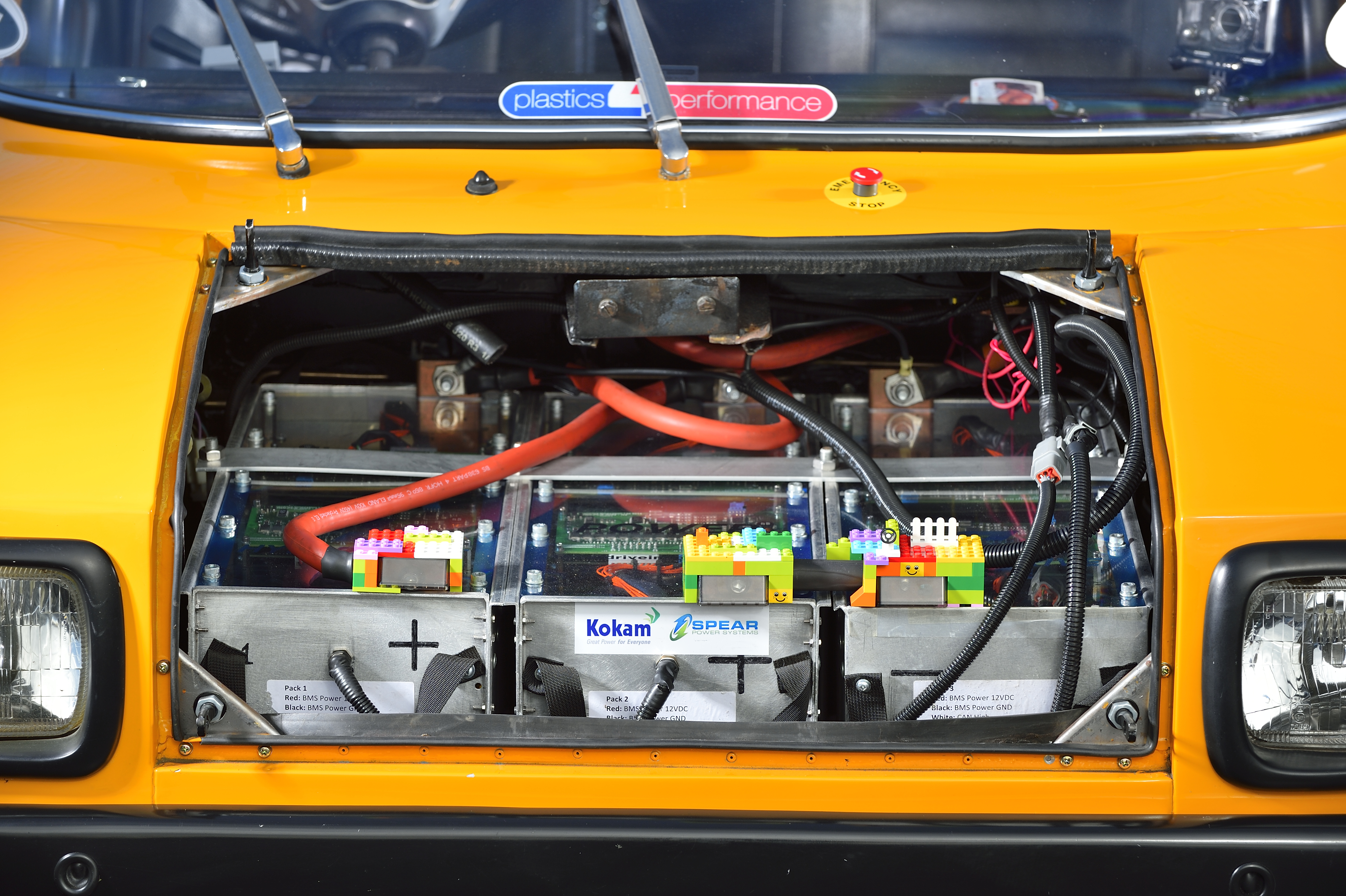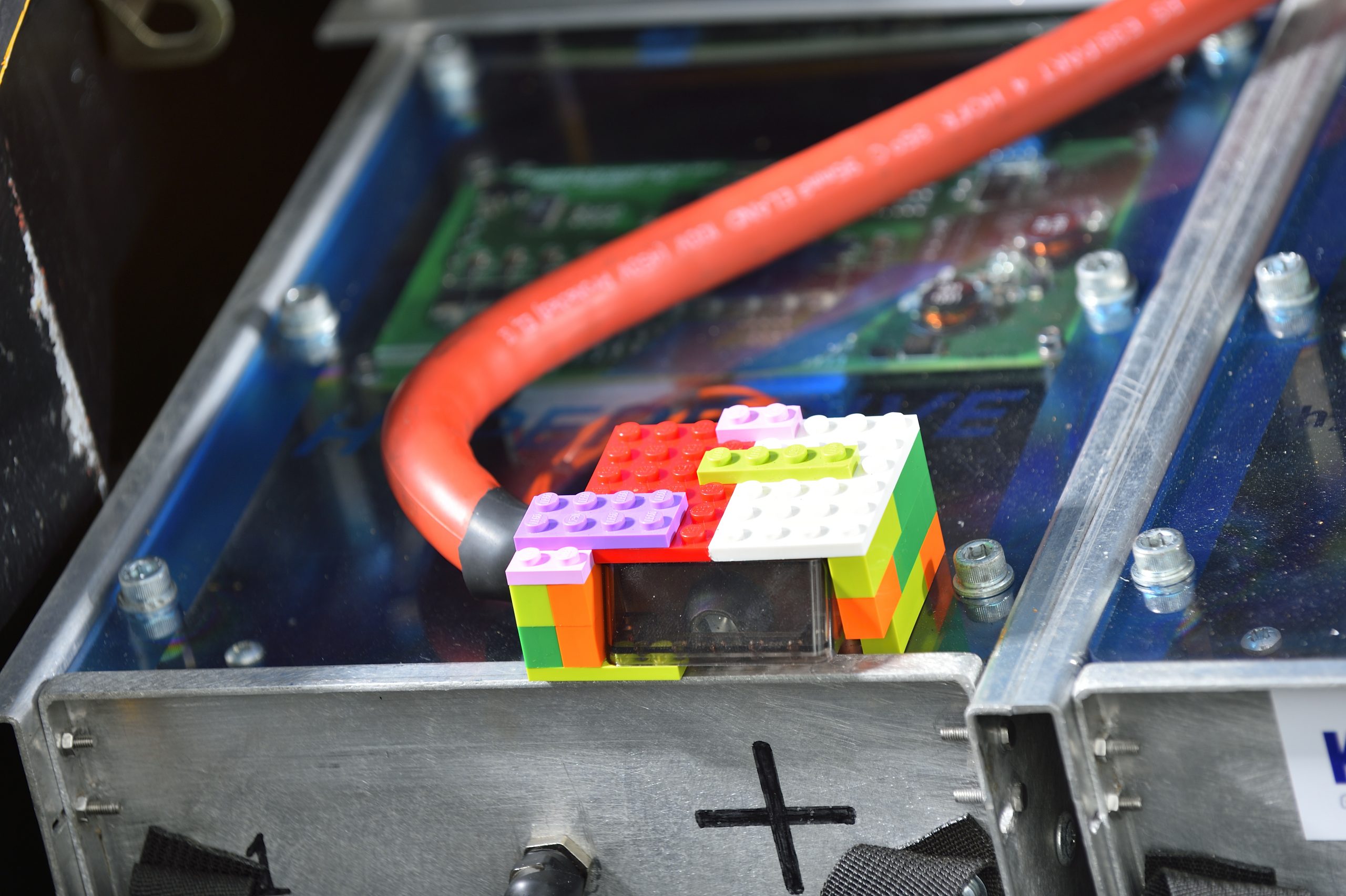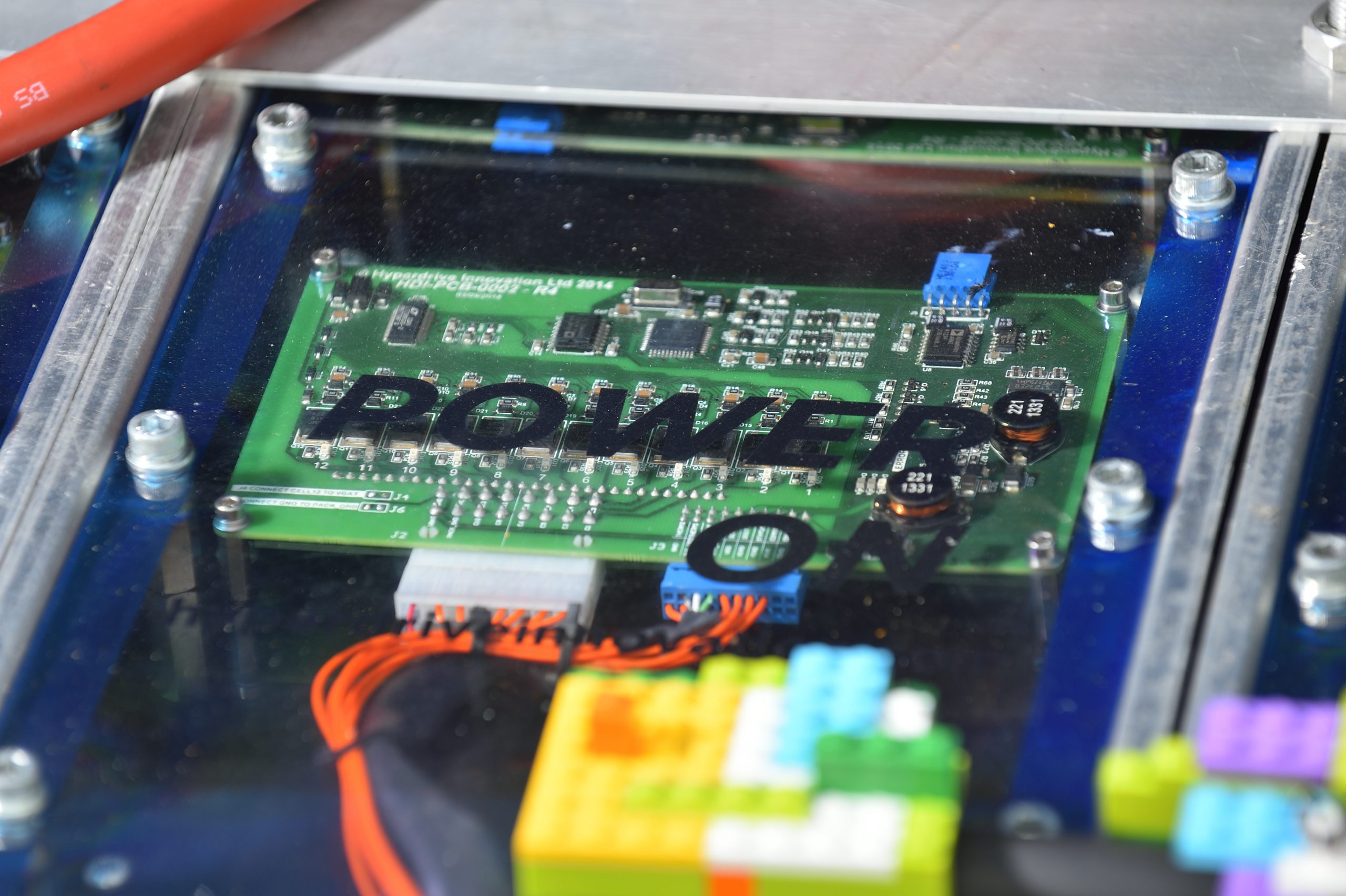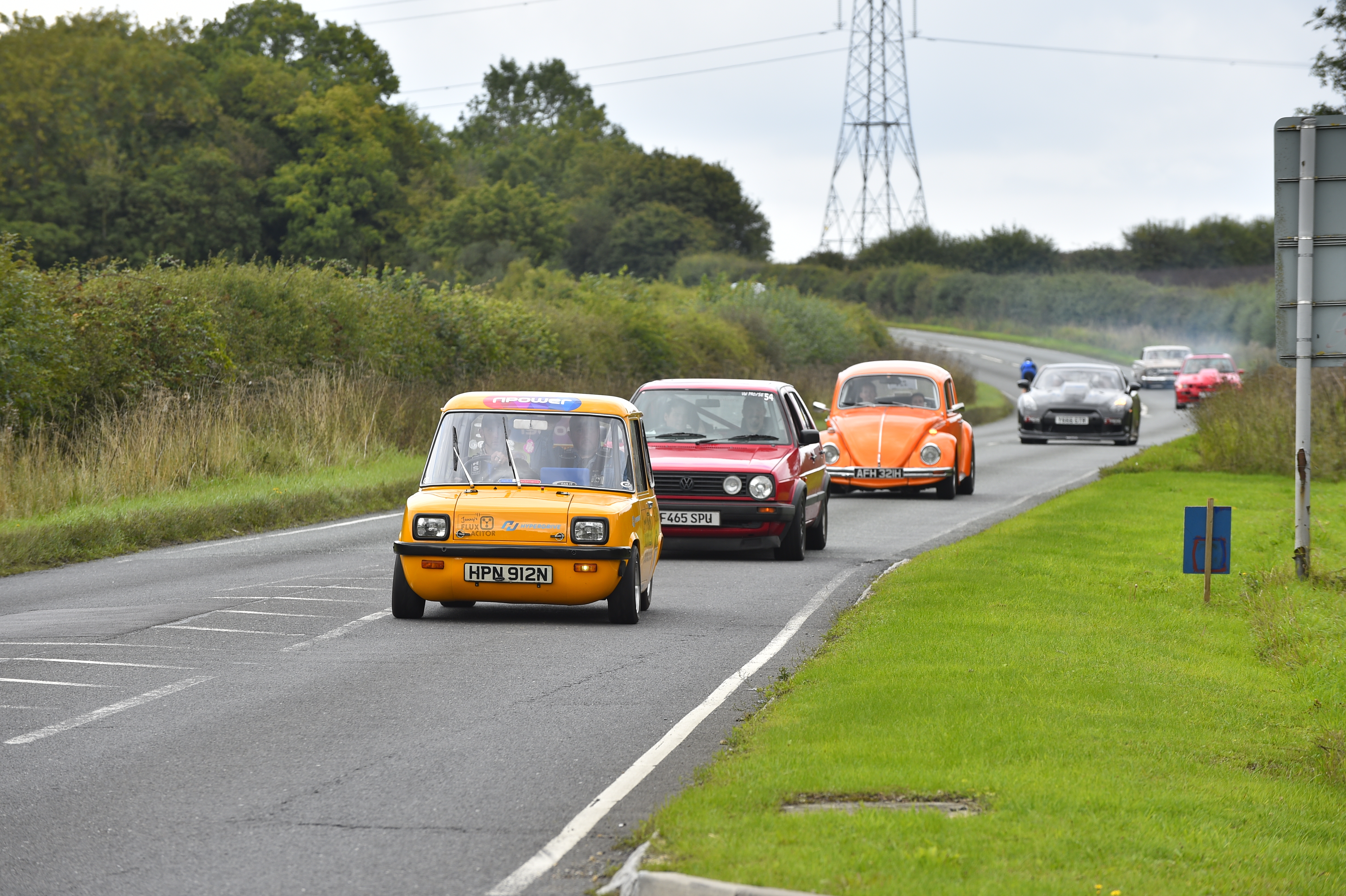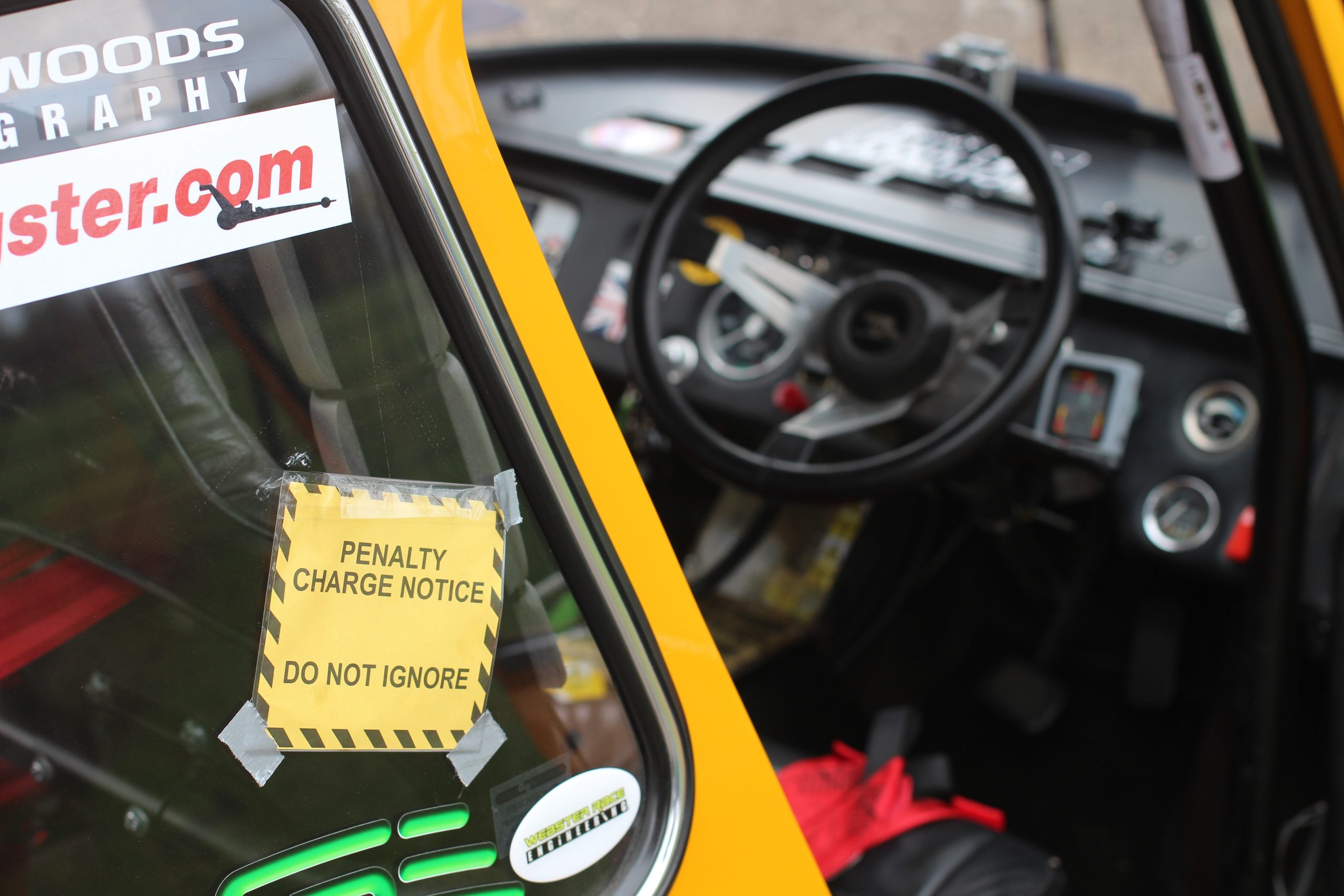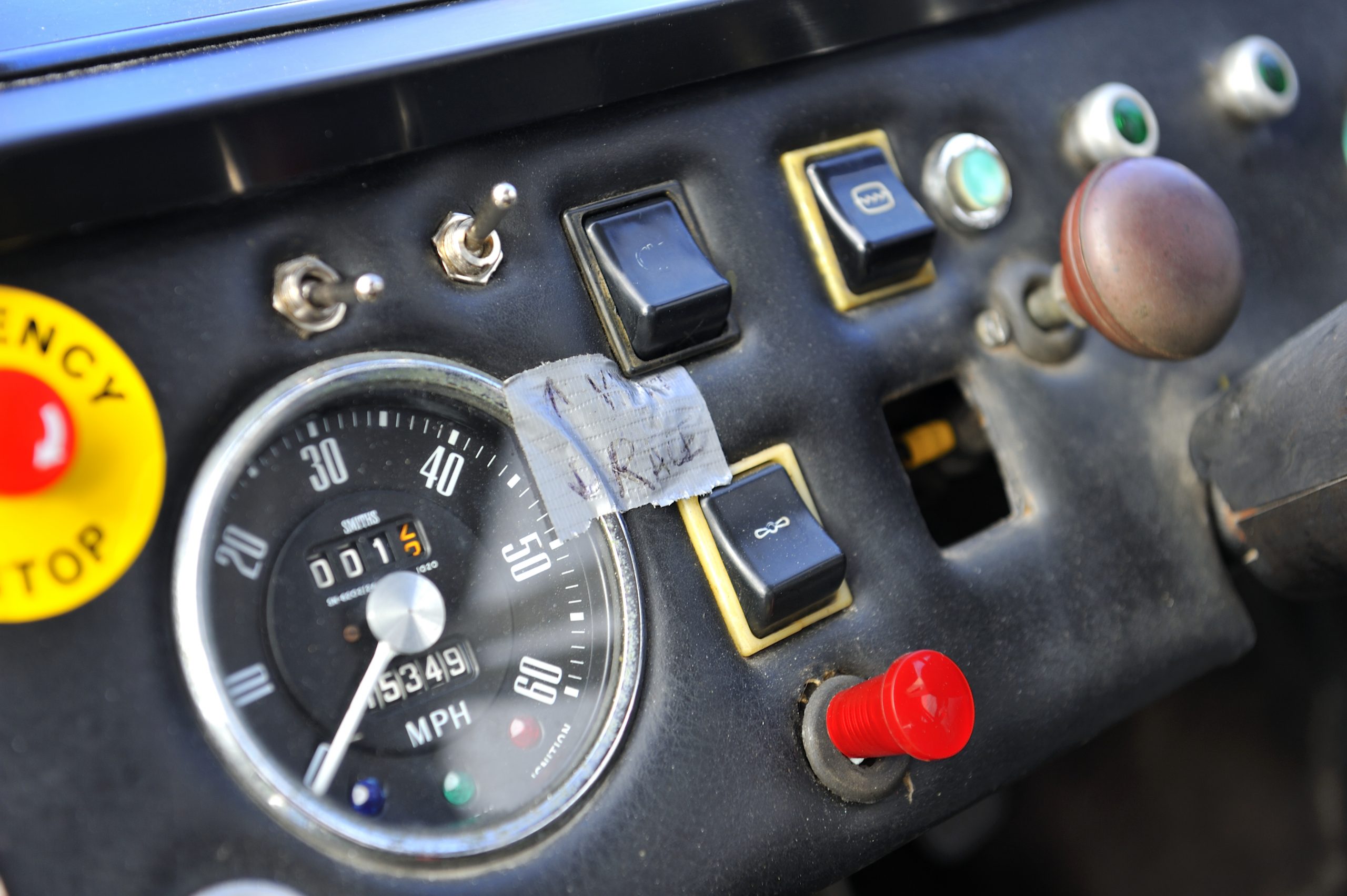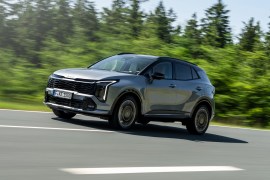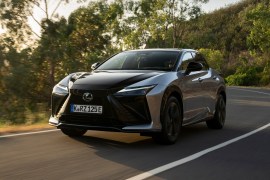Hitching a ride in the world’s fastest electric city car
Car tinkerer extraordinaire Jonny Smith just broke the record for the fastest road-legal electric car – and we've been for a ride in it
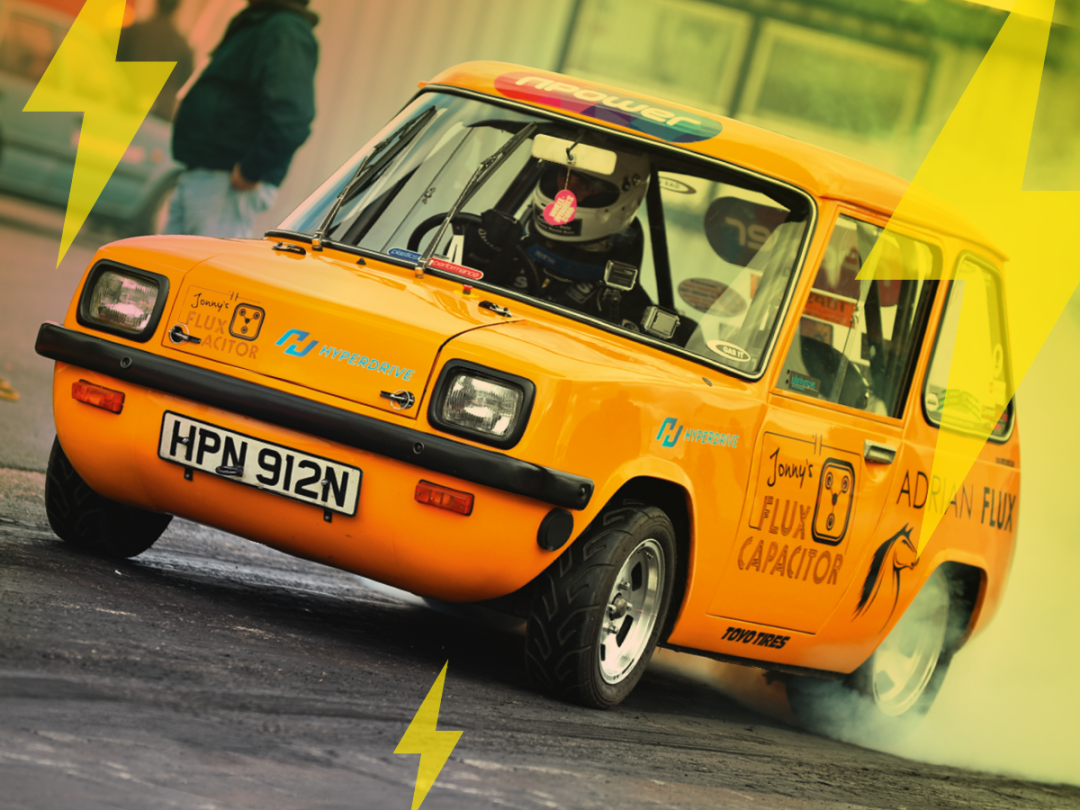
Every car Jonny Smith owns has a story.
His Dodge Charger has bulletholes in the boot (caused, he suspects, by somebody firing from the inside out); his Austin Allegro, a car widely considered to be one of the worst ever made, has been fitted with a 2.7-litre V6 engine; and even the emerald green Insight he picks me up in is the most travelled example of Honda’s first-gen hybrid in Europe.
But his little yellow Enfield, aka Jonny’s Flux Capacitor, has the best story of them all.
City slicker
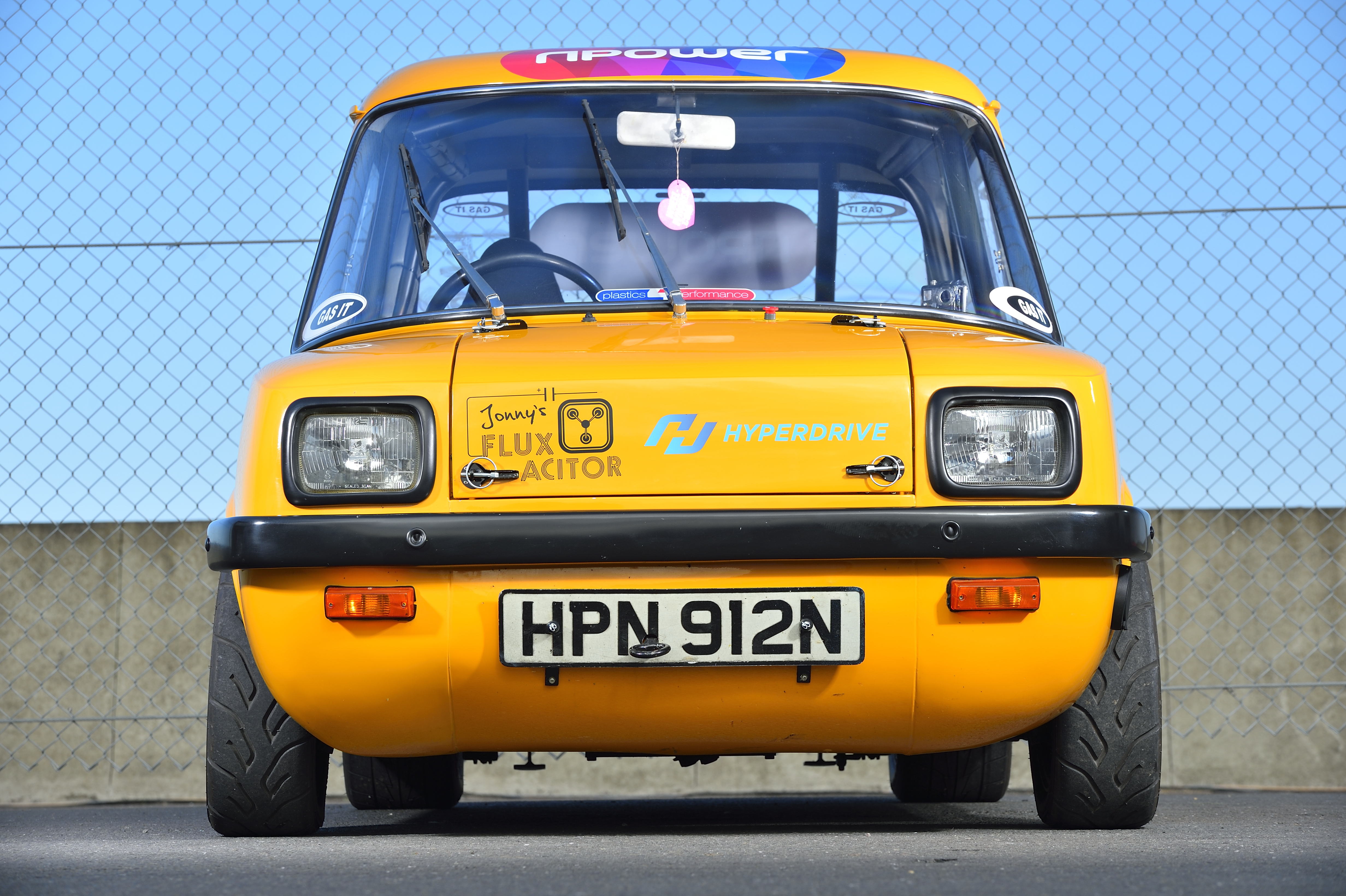
As we pull up to Jonny’s Lincolnshire home, I notice some clues that suggest there’s more happening on this road than just horse riding and dog walking. Tyre marks scuff the Tarmac directly outside his gravel driveway, evidence of previous rides he’s given in his Flux Capacitor (a Back To The Future reference that, if you don’t get, you’re probably reading the wrong website).
Where Doc Brown’s Flux Capacitor was the secret behind his time-travelling DeLorean, Jonny’s is a highly modified but still completely road-legal Enfield 8000 ECC, originally made on the Isle of Wight in 1974. Back then it was intended to be a little city runaround not unlike a Renault Zoe or BMW i3, developed in reaction to the oil crisis that briefly threatened to plunge the planet into a Mad Max-style battleground where fuel was rarer than yeti tears.
Designed by the man responsible for the jet-propelled Thrust2, a car that held the land speed record for 14 years, you might think the Enfield 8000 would be no stranger to going quickly.
But with a 48-volt electric motor and eight 12v lead acid batteries to power it, the car’s 0-60 time was a less than impressive, er, never – it had a top speed of 40mph. Considering it cost more than twice as much as an Austin Mini, it’s not a huge surprise only 120 were made.
Jonny’s specimen was the third to roll off the production line and came into his possession via a lady in Bristol, where it had been damaged by flooding on the banks of the river Avon. He convinced her to sell it for £1000 in 2012 and set to work turning it into a drag racer.
We need to torque
‘‘When I brought it home my brother asked: ‘Is that a real car or can you drive it on the pavement?”’ Jonny tells me as we stand in the garage admiring his diminutive dragster.
“I like that it looks so inappropriate for purpose,” he says. “I fancied the idea of building an electric hot rod but wanted to use a car that had always been battery- powered, so I went back through the archives of time to find an electric car that nobody remembered. The original car was pretty amazing in terms of technology. It had a heated windscreen, which at the time was unheard of, and its own onboard charger in the boot that came out on a little rail so you didn’t have to go to a special charge point.”
The water had killed the car’s innards but Jonny needed to rip its guts out and start again anyway. Out came the original 8hp electric motor and in went two 9in DC ones, connected together inside the old transmission tunnel and attached to a whacking great differential and a rear axle that could cope with the massive amount of power Jonny planned to feed through it.
The source of that power is unexpected to say the least. While it might not have a Flux Capacitor, Jonny’s car does have its own Hyperdrive, in the shape of 144 lithium pouch-cell batteries sourced by a company of the same name in Sunderland. “What’s so weird about Sunderland?” you’re probably thinking, but that’s not the strange part – it’s what these batteries were originally intended for that’s unusual.
“This spec of battery is built for a Bell SuperCobra attack helicopter,” Jonny says as he lifts the bonnet to reveal a bank of blinking lights – the car’s battery management system. “They start the chopper’s engines and run the mini-guns on the side,” he adds with a grin.
Beneath Perspex, the three battery packs look more like a server cluster than a power source for a car. “The retail price is US$30,000 and they don’t even look interesting,” he reveals. “Underneath they look like posh sachets of Cup-a-Soup.”
But what they look like isn’t important. What you get is huge power that can be deployed quickly without catching fire – and that bit is important. “When lithium goes up, it’s not an explosion like fuel – the cell would essentially turn into lava,” Jonny explains. “You know in Alien where their blood is like an acid that burns through anything? It’s kind of like that.”
The Enfield’s new batteries make it about 100 times more powerful than the original: 600kW instead of 6kW, 800hp instead of 8hp. “Some calculations even say 1003hp,” says Jonny, “but the torque is the real killer. When we’ve got it really wound up it’s got pretty much double the torque of any Ferrari on sale now.”
Drag king
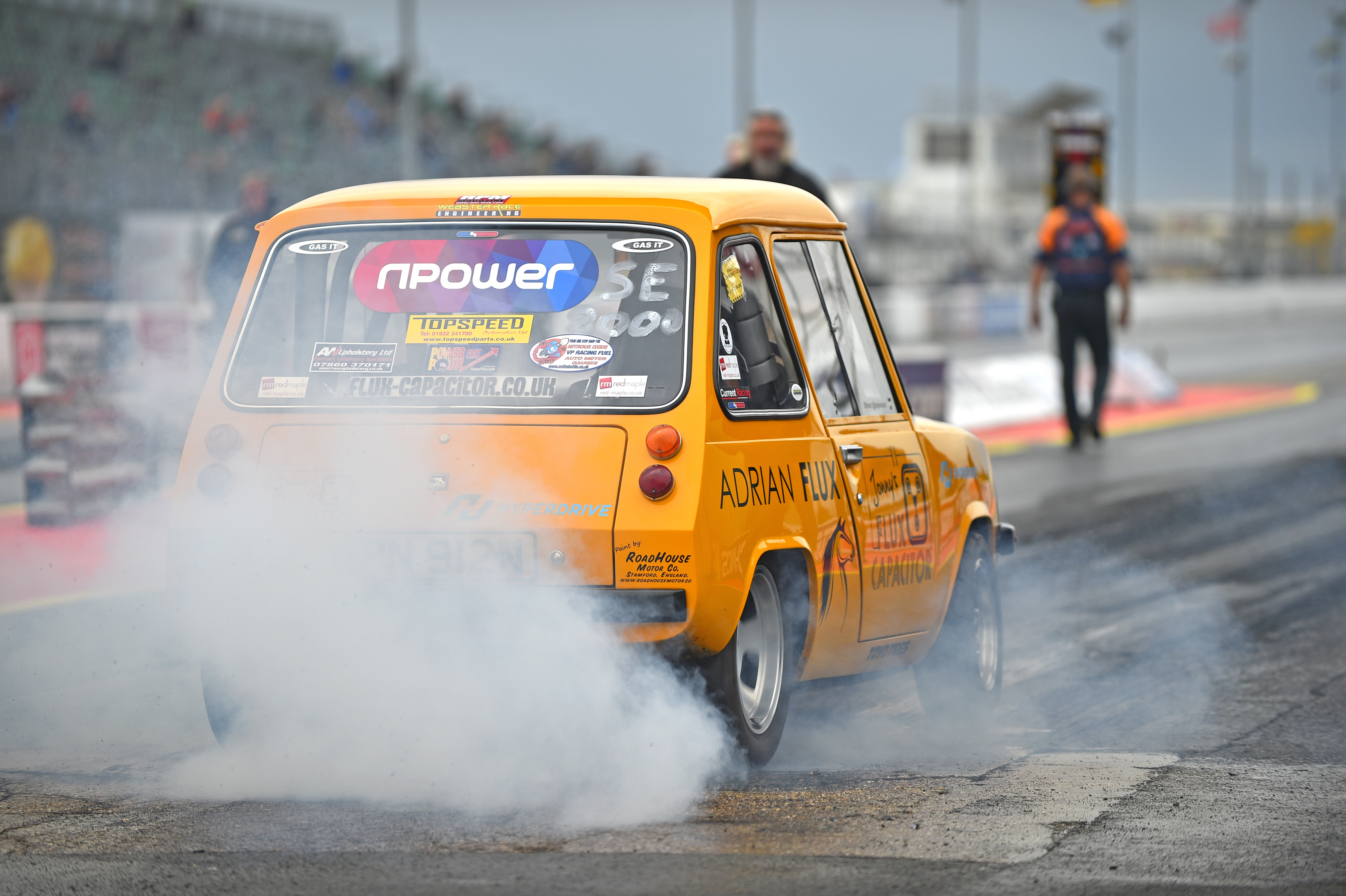
The end result is a car that at the time of my visit did zero to 121mph in 10.84 seconds – a European record for a street-legal EV. That’s also faster than a Lamborghini Murcielago, a Pagani Huayra or a Ferrari Enzo.
“But hang on!” I hear you cry. “In its ‘Ludicrous’ mode Tesla’s P90D is limited to 155mph and you just said this satsuma on wheels will only do 121mph. How can it be a record breaker?” While I suspect you’ve had to check that on Tesla’s Wikipedia page, you’re right.
However, stick that Model S on a straight bit of track, put your foot down and it’ll pass the quarter-mile mark 10.9 seconds later. The Flux Capacitor will get there first. “In the real world the quarter-mile has been a good benchmark for decades,” Jonny explains. “If you can run one under 12 seconds it’s always classed as fast. If you can break 10 seconds, it’s flipping fast.
“I started off wanting to use this car for a laugh but I’ve become genuinely attached to its history and what it stands for,” he admits, replacing the bonnet. “I guess we should take it for a drive, shouldn’t we?”
Take me home, country roads
Strapped into four-point racing harnesses, we trundle out onto the country roads surrounding Jonny’s home. As the road straightens and Jonny gives it some beans, the Perspex windows rattle and the Enfield’s two motors let out a whine that’s a bit like a cross between a spaceship and a London Underground train.
“As soon as the car went over 100mph on the drag stripI started losing side windows,” he says. “I lost one at 108mph into a funfair. That’s why they’re bolted together now.”
We’re not doing anything close to that but it quickly becomes apparent that this isn’t a Nissan Leaf or Renault Zoe. It’s not soundproofed – it’s not even fully waterproof – but its race tweaks, tiny proportions (it’s shorter than an old Fiat 500) and low ride height make it feel like being inside a homemade escape pod as it’s fired from a doomed aircraft.
On public roads we obviously can’t push it to its limits, but just accelerating up to 60mph you get a sense of how much faster it could go. The response is instant and feels never-ending, those Cup-a-Soup gunship batteries really going to work.
“There are very few cars that can come close to the feeling of this on hard throttle,” says Jonny, his voice raised slightly over the noise of the wind and rattling suspension. “It’s like being in a stretched catapult. If there’s enough road it’ll just keep pulling.”
We don’t have much road, so Jonny pulls into a lay-by to turn around. The modifications he’s made mean the Enfield is happiest in a straight line, so much so that the rear end lets out pained groans when turning at slow speeds, like a sinking ship in a storm threatening to tear itself in two. He assures me it’s nothing to worry about.
The road ahead is straight and clear, and on this cold day the back end does wriggle a little under acceleration. “It doesn’t have all the electronic guardian angels that a lot of supercars have,” Jonny points out. “It’s a wake-up call every time I get in it, but when it breaks traction it doesn’t do it violently,” he says, nodding over his shoulder. “You forget that the back wheels are just there.”
Heading back home we encounter a Porsche 911 at some roadworks. "He can wait," Jonny decrees, scooting through the gap before the iconic sports car has a chance to. "The Turbo is good bait but a Carrera S isn’t even worth taking on. Certainly not from nought to sixty.”
If you wanna be a record breaker…
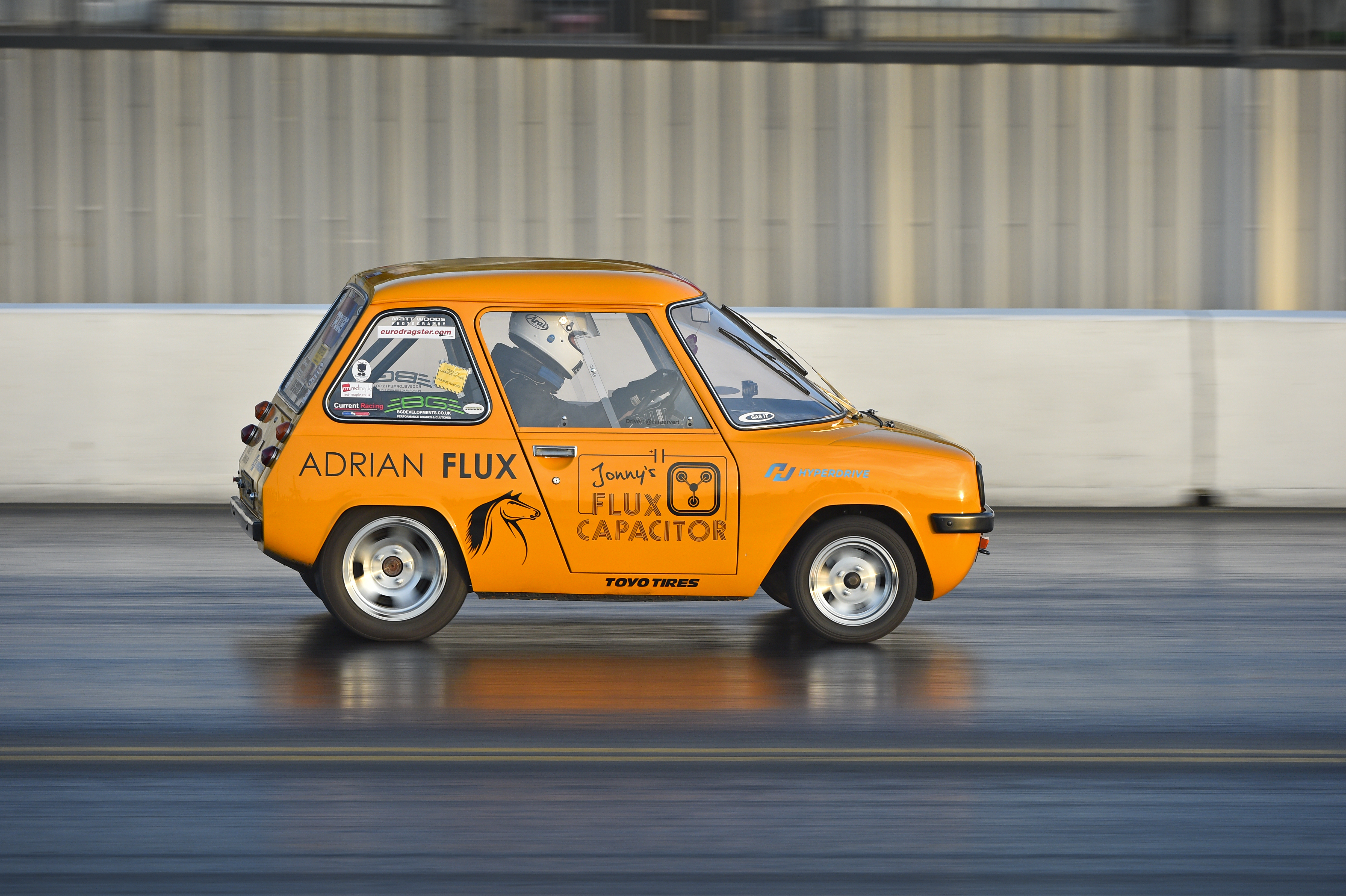
Back in Jonny’s kitchen, the Enfield safely on charge in the garage, it strikes me that this car is the automotive equivalent of a puffer fish – a ridiculous animal that looks like something a child might draw but hides four large, powerful teeth in its mouth and a deadly poison within its internal organs.
Behind the Flux Cap’s friendly face is a pure hot rod. As if to prove my point, Jonny reveals he has a one of the toxic little blighters in an aquarium by his front door.
…more power’s what you need
Since my visit the aluminium puffer fish in Jonny’s garage has been given some extra teeth. In order to break the street-legal world record it needed to beat 10.25 seconds, a record set by a modified 1972 Datsun 1200 known as the White Zombie.
That extra oomph is provided by another battery pack in the boot, which brings the power up to 400 volts. Volts equal top speed and amps equal acceleration. As a road car it also means more range.
And that’s important because amid all this torque talk it’s easy to forget that the Flux Capacitor is still a road car with insurance and an MOT. Jonny even took his daughter to school in it once.
But Saturday isn’t a school day and on 16 July 2016 Jonny’s little Enfield 8000, with its silly round face and rattling windows, smashed the world record for a street-legal electric car, covering the quarter-mile at Santa Pod in 9.86 seconds with a top speed of 121mph.
Don’t expect him to stop there either. What’s abundantly clear when you talk to Jonny is how much glee he takes from surprising people with his little yellow blob and he’ll happily run through some scalps he’s taken on the track.
“I slapped an Audi A4 Touring Car, they weren’t very happy about that. I reckon I could beat a Formula E car to 60mph – maybe even to 100mph,” he suggests. “The difference is I can drive to the fish ‘n’ chip shop afterwards and they can’t.”
Pictures: Matt Woods
